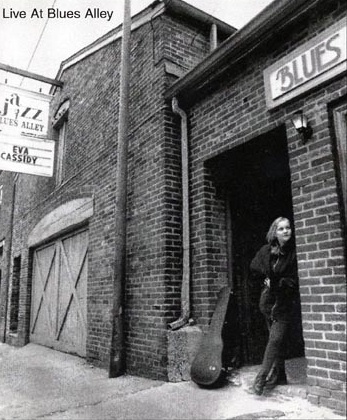Independents and chains in concert promotion
 Original House of Blues, Cambridge, MA. Photo by Gail Sullivan.
Original House of Blues, Cambridge, MA. Photo by Gail Sullivan.In the same vein as Tysons vs. Reston, yesterday's papers disclosed that the National Capital Revitalization Corporation is negotiating with the House of Blues to open a place in Mt. Vernon Triangle. See "House Of Blues Seeks a D.C. Home," subtitled "Some Local Venues Fear Chain's Impact," from the Washington Post.
This is problematic for reasons not really covered in the article, which, shockingly did quote people who had reservations. (Clearly, the article wasn't written by Dana Hedgpeth.)
First, in DC proper places like the Black Cat, 9:30 Club, and to some extent Blues Alley have been key elements of commercial district revitalization, long before other businesses believed that things could turn around in the city. I don't know for a fact, but it's likely that these businesses received little if any financial support from DC government agencies. (Similar to how DC gave beaucoup dollars to Home Depot, but never any substantive financial and technical assistance to the independent hardware stores in the city.)
Note that there are many other music venues in the city, in places like Georgetown, Adams-Morgan, U Street, H Street, and in the East End of Downtown as well. Although they tend to be much smaller than the House of Blues.
Also see these previous blog entries on this broad topic of music and commercial district revitalization:
-- Rockin Revitalization
-- John DeLorean, R.I.P (Rocking Revitalization Part II)
-- Even More about Rocking Revitalization
-- Do people who love music love Hard Rock Cafe?
-- The King is (Just About) Gone but he's not forgotten (Rockin' Revitalization Part Three)
Second, agencies are set up to be able to deal with chains, not independents. While NCRC is doing some decent stuff to promote the participation of independent retail and services within some of their projects, by and large the development and finance industry is set up for chains.
The ICSC exposition in Las Vegas is a perfect example. DC exhibits there every year. But it is for chains and large developers, not for independent businesses. And we don't have equivalent local fairs and programs that promote independent businesses.
 Album cover, Live at Blues Alley, Eva Cassidy.
Album cover, Live at Blues Alley, Eva Cassidy.Third, I thought it was interesting that the story didn't mention Blues Alley, an independent blues and jazz club in Georgetown, while it did mention the Birchmere, which is based in Alexandria. (And note, Montgomery County is incentivizing the Birchmere to open a place in Silver Spring. See "Silver Spring Group Has Plan For Birchmere," also from the Post.) I think this is problematic--subsidizing in all likelihood a chain establishment in the same genre as an extant independent business located in the city.
Fourth, something else that wasn't mentioned in the story is something that I think is more pernicious. In the movie projection industry there is a system called "clearances," where certain theaters have preferences over other theaters. This system tends to advantage chains over independents. This is why you find few functioning independent cinemas in center cities. They've been crowded out by chains.
For background on the clearance system, these pieces from Baltimore are helpful:
-- Coming SoonThe Box-Office Battle Between Baltimore's Independent MovieTheaters Turns On Imminent Arrival Of New National Player (Baltimore City Paper)
-- Senator Theater response to the Baltimore City Paper article
-- Article about a recent clearance lawsuit in California.
When SFX developed control over many music venues across the countries, there were significant complaints about how this advantaged national companies over independents, similar to how national chains have advantages when negotiating with owners of multiple shopping centers. If you want to play in Washington, well you better do what SFX says for Los Angeles, Austin, Detroit, etc. (See "The day the music died" from Salon.)
As the Examiner story, "House of Blues in talks to open location in Washington," writes:
Some local music clubs said they are worried House of Blues could lure performers with more money, edging out independently run venues. "We will lose half of our business, at least," said Seth Hurwitz, owner of the 9:30 club, which has thrived in Washington since opening in 1980.
Why should a government agency be promoting oligopoly, especially at the expense of locally owned independent businesses?
Where was House of Blues when 9:30 Club staked out the U Street neighborhood in 1996.
Finally, why the hell do we create new spaces for new businesses without considering revitalizing "old spaces"--already existing theaters--in the city?. The Takoma Theater is languishing. Why not bring back the Newton (Brookland) or the Ontario (Adams-Morgan) as operating music, theater, and cinema venues? There are similar opportunities in other parts of the city including Wards 7 and 8, or the U Street area, uh Howard Theater is sitting there empty. I can think of an old theater on Georgia Avenue that's a church now... Etc.
This gets back to my lament that the AFI Theater should have been located in the Tivoli or Howard Theaters.
Index Keywords: retail



0 Comments:
Post a Comment
<< Home